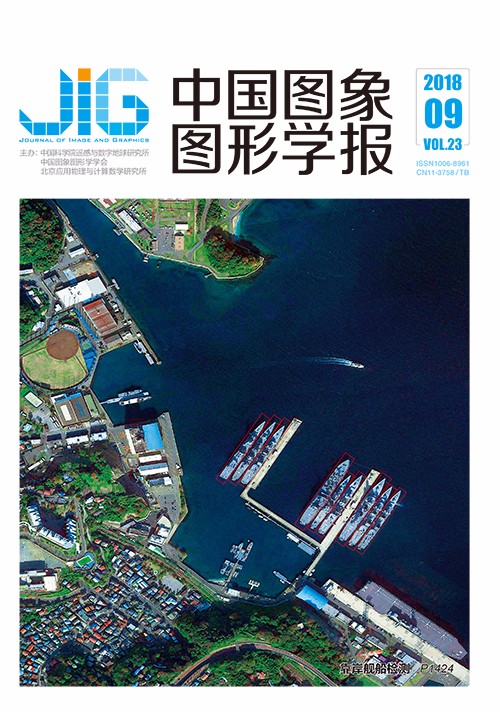
基于3维模型的数字浮雕生成技术
王美丽1,2, 杨丽莹1, 耿楠1,2, 何东健3,2(1.西北农林科技大学信息工程学院, 杨凌 712100;2.农业农村部农业物联网重点实验室, 杨凌 712100;3.西北农林科技大学机械电子工程学院, 杨凌 712100) 摘 要
目的 浮雕是雕塑艺术的一种,根据其空间结构和用途的不同分为高浮雕、浅浮雕和凹浮雕3类。随着数字化技术和3D打印技术的发展,数字化浮雕的生成技术已经成为近年来计算机图形学领域的研究热点之一,从3维模型生成浮雕以其真实自然的效果成为浮雕生成的主要方法之一。为了使即将进入该领域的学者尽快了解该方法的现状和发展趋势,本文对3种类型的浮雕生成技术进行了系统的综述。方法 介绍了3种类型的浮雕生成技术,着重比较分析了基于3维网格模型的数字浅浮雕生成过程中的关键技术,存在问题及解决方案。针对复杂3维网格模型在生成数字凹浮雕过程中存在的部分细节信息丢失、特征线类型体现形式不完善、线条与形体间的过渡尚未解决、生成浮雕效果不自然等具体问题,提出了适用于3维复杂网格模型生成数字凹浮雕的研究方案。同时,从角色动画序列出发,对最优浮雕的生成技术进行了探讨,探讨结合信息熵理论计算选择最佳动作及观察视角的场景,还原艺术家的创作过程,为适用于面向3维打印的用户浮雕产品定制服务提供了可行的解决方案。结果 基于3维模型的浮雕生成方法是生成数字浮雕的一种重要方法,如何通过压缩和细节保持相关算法得到效果自然的浮雕模型一直是研究者们研究的热点问题。结论 虽然由3维模型生成数字浮雕是一种行之有效的方法,但是仍存在细节信息丢失、线条过渡不自然、特征线类型不完善等几个值得继续研究的问题,另外一个值得研究的问题就是如何智能地从3维动画序列生成浮雕。
关键词
Survey and prospect of 3D model-based digital relief generation
Wang Meili1,2, Yang Liying1, Geng Nan1,2, He Dongjian3,2(1.College of Information Engineering Northwest A & F University, Yangling 712100, China;2.Key Laboratory of Agricultural Internet of Things, Ministry of Agriculture and Rural Affairs, Yangling 712100, China;3.College of Mechanical and Electronic Engineering Northwest A & F University, Yangling 712100, China) Abstract
Objective Relief art is a type of sculpture that can be categorized into high, bas, and sunken reliefs in accordance with space structure and application. High relief is characterized by height above 50% of the original mesh depth. Bas relief has a height below 50% of the original mesh depth. Sunken relief is always obtained by carving an object into a background plane. In modern industrial production, relief has a broad application in producing nameplates, coins, architectural decorations, and others. Currently, two main methods are available to generate digital reliefs:2D image-based and 3D mesh-based methods. Most 2D image-based methods usually generate digital relief by feature extraction and 3D reconstruction technologies. However, 2D images cannot convey the depth of 3D mesh. 3D mesh-based methods always obtain digital relief by compression and detail preservation technologies. Digital relief generation based on 3D mesh is a recently emerging research topic with the development of digital technology and 3D printing. This method has become one of the hot topics to generate digital reliefs from 3D models in computer graphic fields. Therefore, this paper presents a literature review to support scholars in gaining further insights into the frontier development of the topic. Method Three types of digital relief generation techniques were systematically analyzed, and the key technologies, problems, and solutions in the process of digital bas-relief generation were examined and compared. Although digital high-relief and bas-relief generation has been widely investigated, spaces remain to be explored for the sunken relief. Currently, some drawbacks are present in generating sunken reliefs with a complex model:detailed information is missing, the line type has not achieved a good embodied form, the transition between the lines and the body was not achieved, and the generated sunken relief is not vivid and natural. This paper provides a solution for generating digital sunken reliefs from 3D complex models. To investigate the technology of optimal relief generation, this paper starts from the character animation sequence and calculates the optimal action and perspective of the scene with the information entropy theory aiming to recover the creation process of artists. The investigation work aims to provide a feasible solution for user customization and 3D printing relief production services. Result This process is one of the main methods to generate a piece of relief from 3D models. Considering high and bas reliefs, numerous researchers have studied several methods, which we categorize into two classes. One is based on human visual information and relief is generated by compressing the 3D model. Although this algorithm is simple, most relief details are lost during compression. The other class is based on several geometrical operations. This algorithm is good in preserving details but always needs to solve the Poisson equation, which requires several calculations and has low efficiency. Furthermore, this algorithm can easily generate local deformation, and sometimes, human interactions, such as adjusting parameters, are necessary to achieve the desired effect. At present, the process of how to obtain a vivid effect through compression and detail preservation has been a hot topic. Sunken relief always conveys information by lines. However, existing methods have not considered the manifestations of three types of lines, namely, main, inner, and fine shadow lines. A simple line arrangement could not show a complete sunken relief. Moreover, transition between the lines is necessary to generate a vivid and natural sunken relief. For these problems, some research is consequential, such as investigating different embodied forms of various types of lines and setting different engraving depths and locations for various types of lines for a smooth transition between the lines and the body. On the basis of relief generation, two important studies exist, that is, the selections of best attitude and perspective. In addition, the process of how to achieve an optimal relief through intelligent algorithms is worth discussing. This case will reduce the difficulty encountered by artists and sculptors in the process of carving. Selecting the best posture from an animation sequence is similar to the problem of key frame extraction. Furthermore, the best perspective can provide more important information than other perspectives. Thus, using the information entropy theory is a feasible scheme for optimal relief generation from an animation sequence. In addition, current digital relief generation methods cannot composite models considering the spatial structure and importance of characters. Combination model relief should not be generated by simply compositing several models together. Conclusion Generating a digital relief from 3D models is an effective method. However, the processes of obtaining additional details and line types, creating the transition between lines, and intelligently generating the 3D bas relief automatically from the 3D animation sequence also pose certain problems.
Keywords
bas relief sunken relief details reservation non-linear compression the best perspectives the best attitude 3D printing
|



 中国图象图形学报 │ 京ICP备05080539号-4 │ 本系统由
中国图象图形学报 │ 京ICP备05080539号-4 │ 本系统由